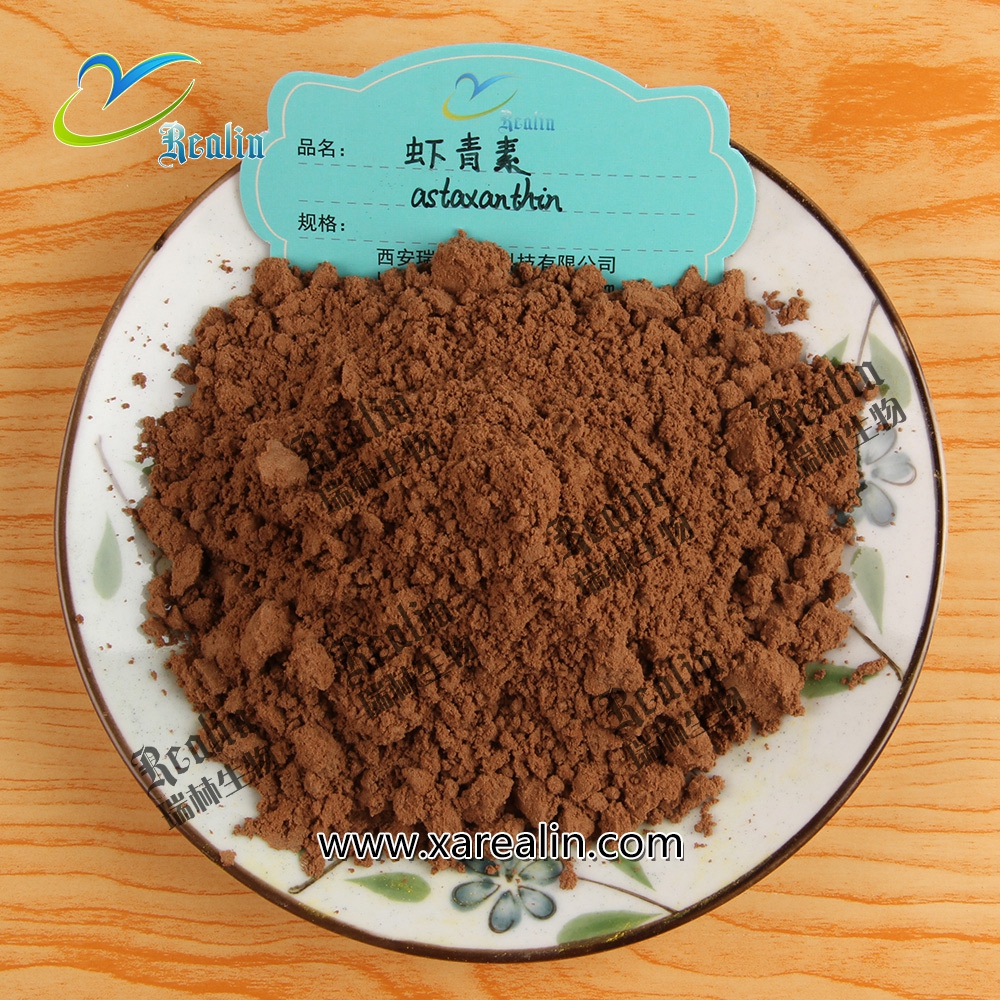Astaxanthin
Details of Astaxanthin:
Other name: Natural astaxanthin ; (3S,3'S)-3,3'-dihydroxy-beta,beta-carotene-4,4'-dione; (9cis,9'cis,13cis,13'cis,15cis)-3,3'-dihydroxy-beta,beta-carotene-4,4'-dione
Molecular formula: C40H52O4
Molecular weight : 596.85
C.A.S number : 472-61-7;122871-99-2
Assay: 1%, 1.5%, 2%, 3%
Characteristic: Dark violet powder
Solubility: Insoluble in water,soluble in many of organic solvents
Description of Astaxanthin:
Astaxanthin, a naturally occurring carotenoid pigment, is a powerful biological antioxidant. Astaxanthin exhibits strong free radical scavenging activity and protects against lipid peroxidation and oxidative damage of LDL-cholesterol, cell membranes, cells, and tissues. Astaxanthin has been the focus of a large and growing number of peer-reviewed scientific publications.
Function of Astaxanthin:
Protection of the eye and central nervous system.
Prevent UV radiation.
Disease prevention of Cardiovascular.
Enhance immunity.
Enhance the body& energy metabolism.
Anti-inflammatory and anti-infection.
Inhibiting tumor.
Medical Use of Astaxanthin:
Astaxanthin is a powerful antioxidant that it is 10 times more capable than other carotenoids, so it is beneficial in cardiovascular, immune, inflammatory and neurodegenerative diseases. It also crosses the blood-brain barrier, which makes it available to the eye, brain and central nervous system to alleviate oxidative stress that contributes to ocular, and neurodegenerative diseases such as glaucoma and Alzheimer's.
Cosmetic Use of Astaxanthin:
For its high-performance antioxygenic property, it can protect the skin from ultraviolet radiation damage and effectively reduce melanin deposition and the formation of freckles to keep skin healthy. At the same time, as an ideal natural coloring agent for the lipstick can enhance the radiant, and to prevent the ultraviolet injury, without any stimulation, safe.








